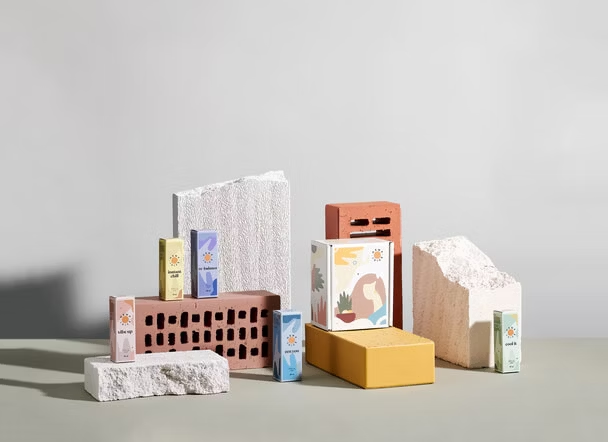Embracing Sustainable Packaging: A Necessity in Today’s Business Landscape
In today’s conscientious marketplace, sustainable packaging has transcended mere trendiness to become an imperative for brands worldwide. Companies are increasingly turning to eco-friendly packaging solutions not only to curb their environmental footprint but also to resonate with environmentally aware consumers.
The Significance of Sustainable Packaging
Environmental Impact: Packaging waste poses a significant threat to our environment, contributing substantially to pollution. By adopting sustainable packaging, brands can mitigate waste accumulation, conserve resources, and reduce their carbon footprint.
Consumer Demand: There is a growing preference among consumers for brands that prioritize sustainability. Embracing eco-friendly packaging not only enhances brand reputation but also fosters loyalty among environmentally conscious customers.
Regulatory Compliance: Governments globally are tightening regulations on packaging materials and waste management. Transitioning to sustainable packaging helps brands comply with these regulations, avoiding potential fines and penalties.
Advantages of Sustainable Packaging
- Brand Loyalty: Consumers are more inclined to support brands that align with their values, including environmental responsibility.
- Cost Savings: Sustainable packaging materials often offer cost-effective sourcing options, while reducing waste can lower disposal expenses.
- Innovation: Developing sustainable packaging solutions can drive innovation and differentiate brands in competitive markets.
Types of Sustainable Packaging Materials
Recycled Materials:
- Post-Consumer Recycled (PCR) Content: Made from recycled consumer waste like plastic bottles and paper, PCR materials reduce reliance on virgin resources and promote recycling initiatives.
Biodegradable and Compostable Materials:
- Biodegradable Plastics: Designed to decompose faster than traditional plastics, these materials lessen environmental impact, ideal for products such as custom dog treat bags.
- Compostable Packaging: Materials like cornstarch, PLA (polylactic acid), and bagasse decompose into nutrient-rich compost, reducing landfill waste.
Renewable Materials:
- Plant-Based Plastics: Derived from renewable sources like corn and sugarcane, bioplastics offer an alternative to petroleum-based plastics and can be biodegradable or recyclable.
- Paper and Cardboard: Sustainably sourced and recyclable, these materials help reduce carbon footprints and support responsible forest management.
Innovative Sustainable Packaging Solutions
- Minimalist Packaging Design: Streamlining packaging design reduces material usage and waste, appealing particularly to organic markets.
- Reusable Packaging: Durable containers encourage multiple uses, such as glass jars and metal tins, promoting sustainability through longevity.
- Edible Packaging: Novelty in packaging involves food-grade materials that can be consumed, eliminating waste entirely and offering a unique customer experience.
Implementing Sustainable Packaging in Your Business
- Assessing Current Packaging: Audit existing materials to identify areas for improvement and gather customer feedback to align with sustainability goals.
- Choosing the Right Materials: Select materials that suit product requirements and ensure suppliers adhere to certifications like FSC and ASTM D6400.
- Designing for Sustainability: Create packaging optimized for recycling with clear instructions and communicate sustainability efforts to consumers.
Measuring and Enhancing Sustainability
- Tracking Key Metrics: Monitor material usage, waste reduction, and customer feedback to gauge the impact of sustainability initiatives.
- Continuous Improvement: Sustainability is an ongoing journey; strive for ongoing enhancements to packaging practices.
Case Studies: Leading Brands in Sustainable Packaging
- Patagonia: Uses recycled materials and minimalist designs to reinforce environmental commitments.
- Lush Cosmetics: Champions zero-waste with minimal packaging and engages customers in sustainability education.
- IKEA: Utilizes renewable materials and flat-pack designs to reduce environmental impact.
Challenges and Considerations
- Balancing Cost and Sustainability: Evaluate long-term benefits against initial costs to find sustainable solutions that align with financial objectives.
- Ensuring Product Protection: Sustainable materials should still provide necessary product protection through testing and prototyping.
Conclusion
Sustainable packaging is not merely a choice but an essential practice for businesses committed to environmental stewardship and consumer satisfaction. By embracing eco-friendly packaging solutions, brands can mitigate their environmental impact, meet consumer expectations, and cultivate a positive brand image.
Actionable Steps
- Evaluate Your Packaging: Assess current practices and identify areas for sustainable improvements.
- Choose Sustainable Materials: Opt for eco-friendly options that align with product needs and brand values.
- Design for Sustainability: Develop packaging that facilitates recycling and communicates environmental efforts to consumers.
- Measure and Improve: Continuously monitor and enhance sustainability initiatives to foster a greener future.
Embrace sustainable packaging today to not only protect our planet but also forge stronger connections with environmentally conscious consumers, paving the way for a brighter, more sustainable future.




